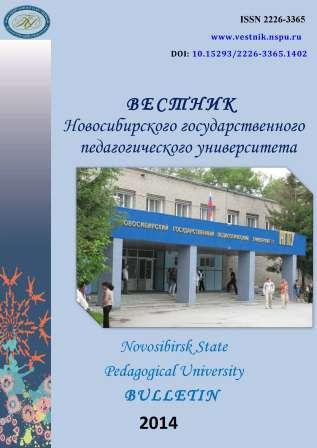ТРОПЫ И РЕАЛИИ В ЯЗЫКЕ ХУДОЖЕСТВЕННОГО ПРОИЗВЕДЕНИЯ И ИХ СООТНОШЕНИЕ С ЭСТЕТИЧЕСКИМ ЗНАКОМ
TROPES AND REALIA IN THE LANGUAGE OF ART WORKS IN THE CORRELATION WITH AESTHETIC SIGN
Author(s): Ismail Tashdemir, Elena Viktorovna SkvoretskayaSubject(s): Language and Literature Studies
Published by: Новосибирский государственный педагогический университет
Keywords: metaphor; metabolum; comparision; metonymy; reality; the internal form of words; lexical derivation; poetic language; an aesthetic sign; an artistic object.
Summary/Abstract: The article "Tropes and realia in the language of art works in the correlation with aesthet-ic sign" is based on the idea of V. V. Vinogradov (1959) and D. S. Likhachev (1967) of one im-portant law of the literary work – the possibilities of tropes to be motivated by objective world of the text. The author develops the position of N. A. Kozhevnikova (1991) that the connections of metaphors and comparisons with names of realia actualize emotionally-shaped potential of the artwork, and expands the idea of the diversity of ways of expressing this relationship, but also connects this phenomenon with the concepts of “aesthetic sign”, “artistic kvazisubject”. Fragments of literary works of XIX–XX are under analysis, main attention is given to T. Tolstaya artworks. The variants of representation of realia correlated with trops are analyzed, and the idea the of tropes` varieties is complemented: not only metaphor and simile but meton-ymy and metabola can be found. The connection metaphor-metonymy images with the realia is specified. The phenomenon is often manifested in titles: “Spring Water”, “Ravine”, “Excava-tion”, “Heart of a Dog”. The attention is drawn to the peripheral manifestations of the phenom-ena, as well as the fact that the relations of trops and realitia in the text are similar to the com-mon usage of lexical derivation, the results of which are secondary meanings of words and word-formation derived words, corresponding to “epidigmatic measurement of vocabulary” (D. N. Shmelev) and is associated with lexical-semantic and derivational inner form of the word.
Journal: Вестник Новосибирского государственного педагогического университета
- Issue Year: 2014
- Issue No: 3
- Page Range: 153-161
- Page Count: 9
- Language: Russian

